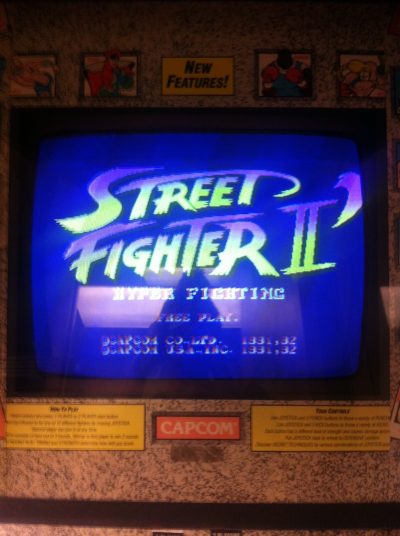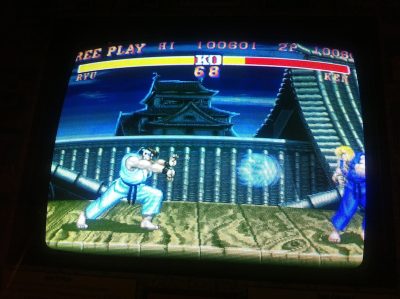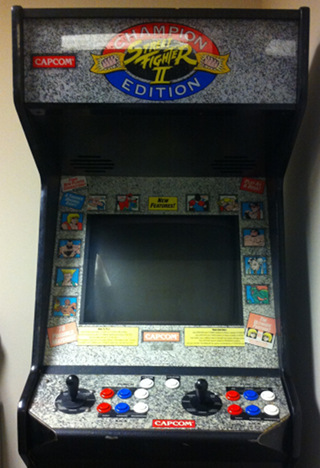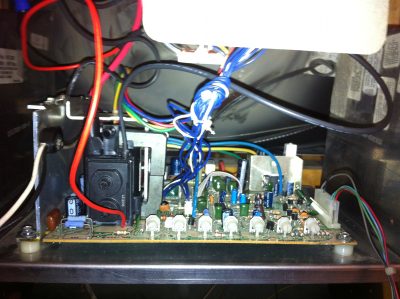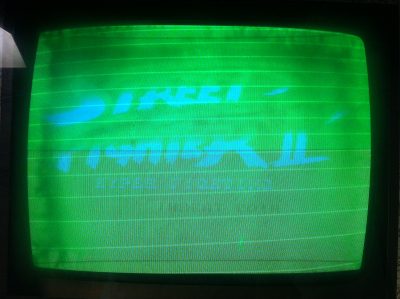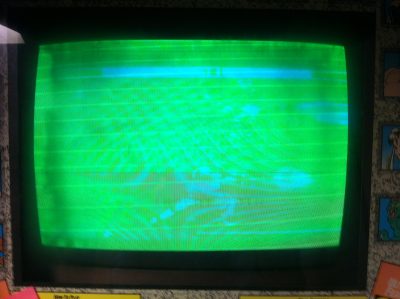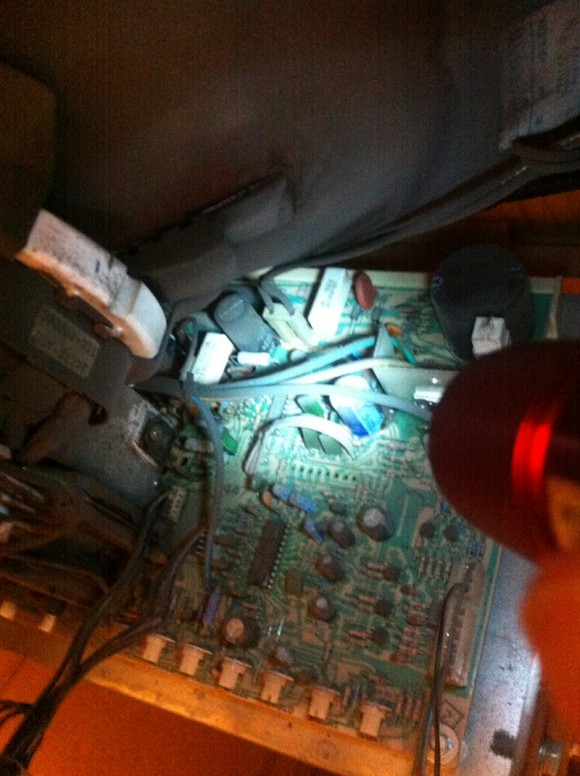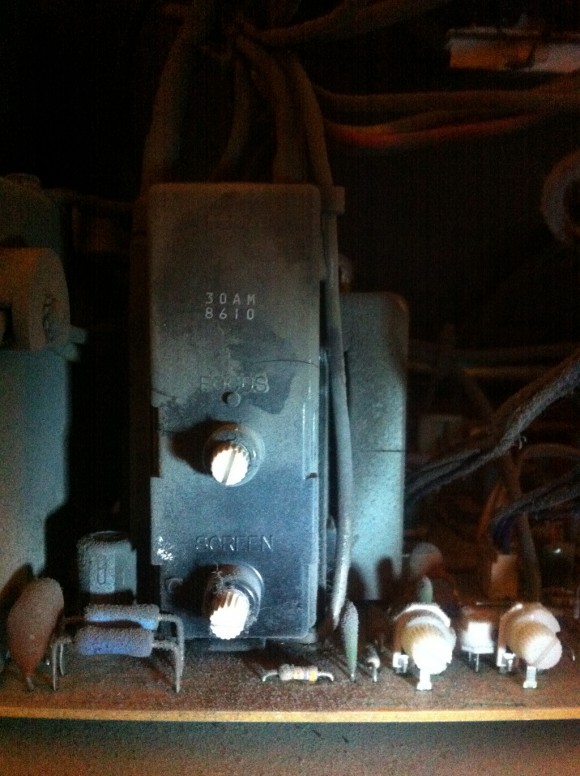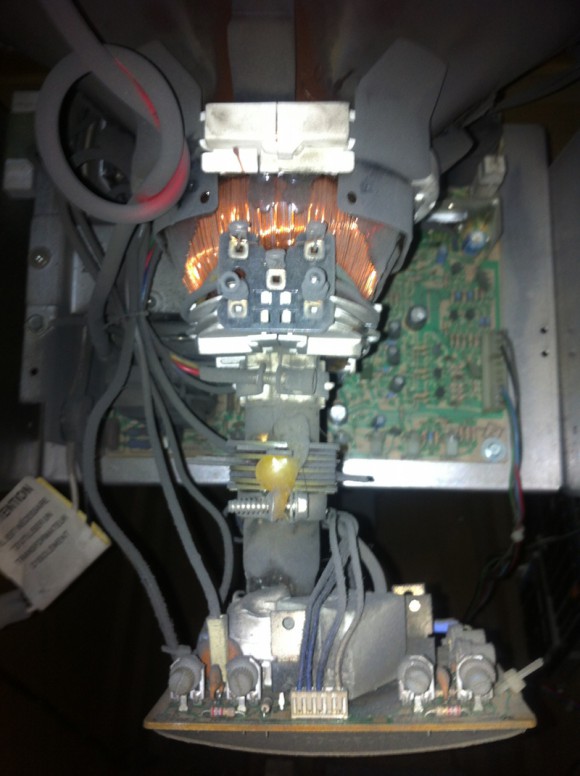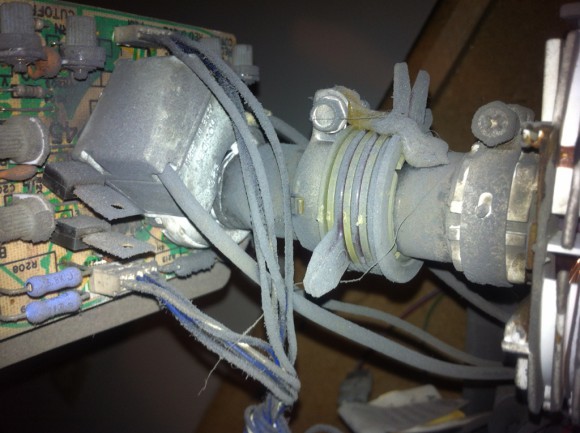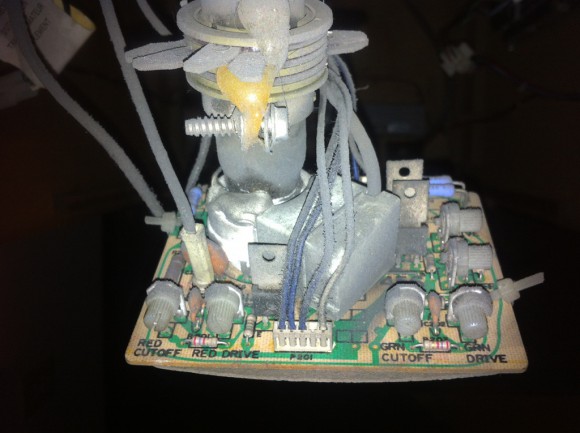I’ve started investigating the Street Fighter 2: Champion Edition arcade machine and here’s what I’ve found so far.
Power Supply Is Good
The first thing you’ll want to check on an arcade board is the power supply. I took my multimeter and measured the voltage on the JAMMA connector part of the board. At first I read a higher than normal reading. The pc board should be getting +5V and +12V from the power supply. What I measured instead was +6.4V and +14V.
I turned down the knob on the power switching supply until I got around +5.6V. I was still getting +14V out of it instead of +12V. I figured I’d need a new power supply. The next day, however, I tried measuring some batteries and found my multimeter was reading them high, too. I got a different multimeter with fresh batteries in it and in the end, I was getting proper readings. I adjusted it back up to around +5V (and +13V), and it’s good. I figure the +13V should be okay as I’ve read it’s mostly only used by the audio system and it should be okay with that.
Next: Check the pc board
The next thing to try is looking at the printed circuit board, i.e. the game circuit board itself. The PCB is actually in really good shape. It’s very clean and feels like new. Here’s a picture of it without Board C (the top one) attached.
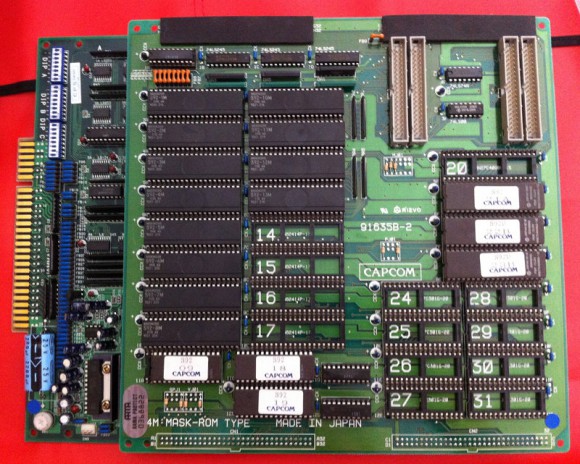 I split up all three boards, A, B, and C. I inspected each one and I actually found a nice little broken trace on board B:
I split up all three boards, A, B, and C. I inspected each one and I actually found a nice little broken trace on board B:
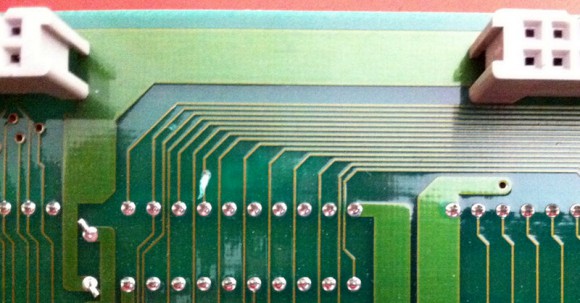 I tested both ends of it with the multimeter and verified it was definitely open. I got a wire and soldered it to both ends to bridge the gap:
I tested both ends of it with the multimeter and verified it was definitely open. I got a wire and soldered it to both ends to bridge the gap:
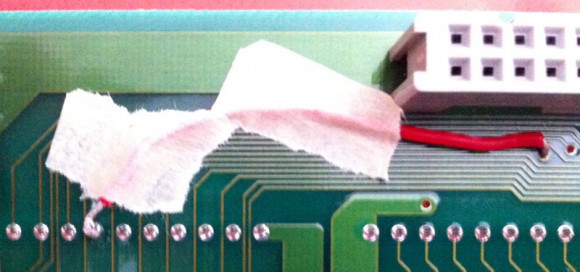 I tested both ends again with the multimeter and it seems good. In this case, it was line 6 of the D bus connector. I traced it to its intended receiver on board B. One of the PAL chips wasn’t receiving this input, so who knows what kinds of errors that was causing.
I tested both ends again with the multimeter and it seems good. In this case, it was line 6 of the D bus connector. I traced it to its intended receiver on board B. One of the PAL chips wasn’t receiving this input, so who knows what kinds of errors that was causing.
I looked at board C and also noticed another knick on one of the traces, but according to the multimeter, it isn’t a broken.
Check the ICs
After inspecting for broken traces, I took a quick look at the socketed ICs. I pulled out a few and reseated them, but for the most part, I couldn’t really see any issues with bad pins or whatnot. It’s still possible some have oxidized pins, so I may try reseating the lot of them if it still doesn’t work.
Now what?
I don’t have the arcade cabinet at home with me where I did this work, so I still don’t know if bridging the above made it any better. After inspecting the board closely, I did notice the potentiometer in the bottom-left corner of Board A. That’s the volume for the speakers. I wasn’t hearing any audio last time I turned on the cabinet, so I’ll try turning that up and seeing if I hear anything next time.
One thing that concerns me next is the monitor. After looking some pictures I took of the thing and comparing with pictures of monitors online, I’ve determined it’s a Wells Gardner K7000 monitor.
Apparently, this monitor typically has some real problems with the “flyback”, so I may have to look into that should nothing yet work.
Try out a working board
I ordered a Street Fighter II: Turbo Hyper Fighting JAMMA board off eBay a few days ago and it came in the mail yesterday. I’ll try that out in the machine. The funny thing about this board is that it is in much worse-looking condition than the Champion Edition board I have now. However, the eBay seller advertised that it worked, so it had better. The Hyper Fighting board has some real nasty dust on it and a lot of the parts just look worn. The CE board in comparison looks brand new.
If the Turbo board also does not work in the cabinet, most likely there is something wrong with the monitor and/or audio. Here’s hoping it does work, though, so I can at least narrow in on the CE board.
